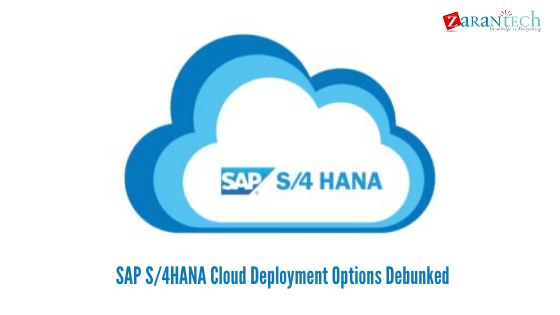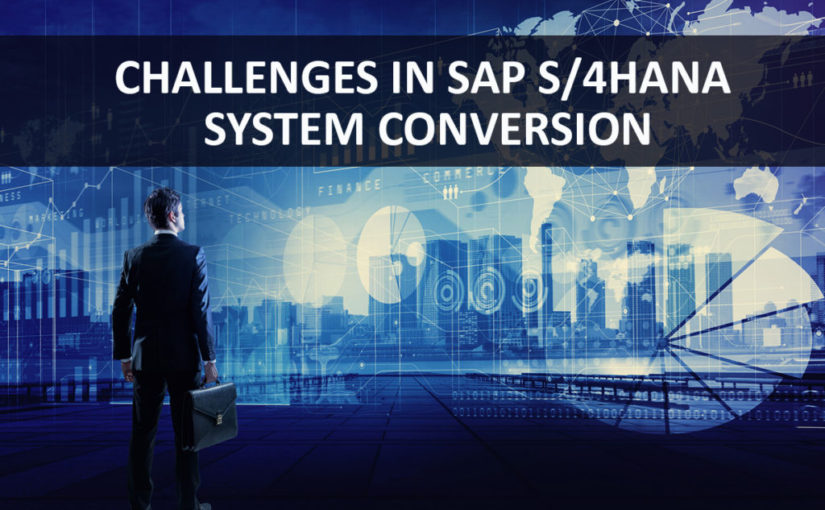SAP S/4HANA Cloud Deployment Options Debunked
Category: SAP S/4HANA Posted:Sep 14, 2020 By: Ashley Morrison
SAP has provided a cloud deployment option for S/4HANA for quite some time now. However, there are numerous flavours of cloud deployment that are often confusing and hard to keep track of, particularly given SAP’s fondness for changing the naming of their products and offerings regularly. In this article, we are most likely to talk about the S/4HANA cloud deployment options and key differences between them.
To start with, it’s worth mentioning that customers can absolutely choose to deploy S4/HANA on-premise on their own data centres or in their existing cloud infrastructure providers such as AWS at Amazon. This approach implies that the customer is completely in charge of the instalment, maintenance and tracking of the SAP system. Although SAP is clearly pushing cloud deployment options in terms of their marketing and sales initiatives, many firms will choose to remain on-premise because of legal, security and legacy requirements. As expected, the on-premise deployment path uses one of the most control and improve flexibility, but typically results in a higher total cost of ownership (TOC) over the long term.
In regards to cloud deployment for SAP S4/HANA, it is important to distinguish the infrastructure and support service elements offered with each option. Cloud infrastructure option consists of SAP HANA Enterprise Cloud (HEC), an SAP owned and managed cloud infrastructure, or Hyperscalers, which are the primary Infrastructure-as-a-Service companies such as Amazon.com (AWS), Google (Cloud) and Microsoft (Azure). SAP optionally uses installation, monitoring, upgrade and maintenance solutions (historically referred to as “Basis” in the SAP ecosystem) on all these cloud infrastructures. Inevitably, it is the mix of the infrastructure, support services and SAP licensing model (acquisition vs membership) that identifies each of the deployment options discussed below.
First, customers can choose to install their S4/HANA atmosphere in HEC with a bare minimum “keep the lights on” support services from SAP. HEC deployment supports both the upfront software license purchase and subscription pricing models from SAP. In many ways, this option is almost the same to the “on-premise” deployment, other than that SAP systems are installed in an SAP-managed data centre, instead of your own. Customers can then purchase numerous administration and management services on top of HEC hosting if they select to do so. However, customers keep full control over the upgrade schedule and customised development and enhancements that they could intend to deploy in their S4/HANA environment.
Next, we have the S/4HANA Cloud Extended (Ex) Edition, which used to be called S/4HANA Cloud Single-Tenant Edition. This option can either be hosted on SAP infrastructure or through Hyperscalers and includes a subscription licensing model from SAP, where there is no large license purchase in advance, but rather periodic subscription payments. The codebase and functionality provided are primarily identical to the on-premise and pure HEC deployment option discussed above. However, the key difference remains on the Basis of support solutions given by SAP. With S/4HANA Cloud EX Edition SAP offers the installation, monitoring and set up upgrade and maintenance solutions. In fact, this option enforces certain upgrade obligations, where the client is not allowed to remain on an older version of SAP indefinitely, but have some flexibility over the exact timing of each upgrade. Additionally, there are restrictions on sorts of ABAP improvements that can be carried out with EX edition. Specifically, in contrast to the on-premise and pure HEC deployment options, clients use S4/HANA Cloud EX model are not allowed to use implicit ABAP improvements (pre-method, post-method and method override), which can be a significant consideration.
Finally, there is the S/4HANA Cloud Essentials (ES) Edition, previously called S/4HANA Cloud Multi-Tenant Edition, which is also based on a subscription pricing model. This option normally offers the lowest cost of possession, however, comes with the most limitations. The ES Version runs on a various code base than the other options that we have discussed, missing most of the “advanced” features present in the on-premise and Ex Edition offerings. There are also significant substantial on the types of enhancements that can be made in the system. Last But Not Least, ES Edition clients go through a concrete upgrade routine dictated by SAP.
Conclusion
Want to figure out more about SAP S/4HANA Deployment, feel free to visit our website.
We at ZaranTech offer a self-paced online training program for SAP HANA, where individuals get trained on various aspects of SAP HANA including the deployment and more.
Happy Learning!





 99999999 (Toll Free)
99999999 (Toll Free)  +91 9999999
+91 9999999